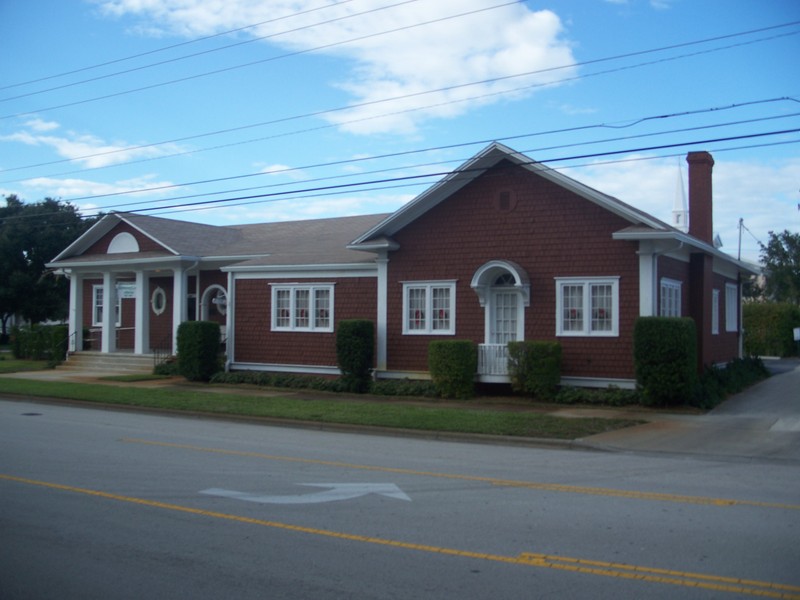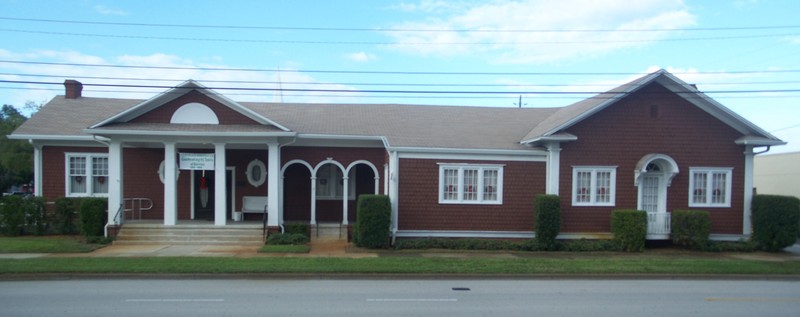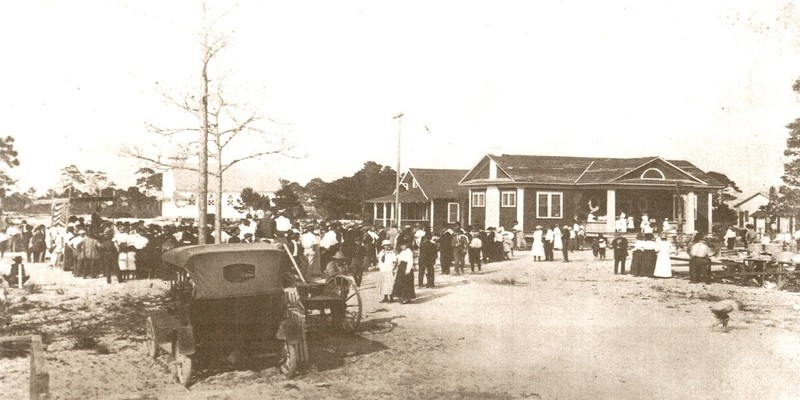Vero Beach Woman's Club
Introduction
Text-to-speech Audio
Images



Backstory and Context
Text-to-speech Audio
In the late 1880s, a small village formed near the Indian River of Florida’s east coast near the homestead of Henry Gifford. Gifford had established the first store in the area and, in 1891, he was appointed postmaster of the village, then known as Vero. The area grew slowly until 1893, when Henry Flagler’s Florida East Coast Railway (FEC) reached the settlement. The railroad spurred growth by bringing in tourists and by providing the means to ship crops to market. In 1903 the FEC Railway built a small station and freight depot in Vero.
In 1911, the Iowa-based Indian River Farms Company purchased fifty-five-thousand acres of low, swampy land west of the railroad line. The settlement of Vero was east of the railroad. The Indian River Farms Company began an ambitious drainage project and began to develop the land for farming. The farmland sold well, leading the Company in 1913 to lay out a town plan, called Vero, for residential and commercial development. The older settlement of Vero, east of the railroad line, continued primarily as a residential area. The Indian River Farms Company encouraged sales and development of their platted area by donating building lots for churches, a woman’s club, and a park. By 1915, the town had a population of five hundred. Vero was incorporated in 1916 with A. W. Young, an official of the Indian River Farms Company, serving as the first mayor. The Florida Land Boom of the 1920s boosted the economy of the growing town. The Indian River County road system was improved between 1915-1928, bringing in land speculators, tourists, and new residents. Vero, which had originally been in St. Lucie County, in 1925 became the county seat of the newly created Indian River County.
Women’s clubs, which proliferated in the nineteenth century, were an important avenue for intellectual pursuits and civic involvement. The initial impetus for the formation of a women’s club was often the desire to improve the town’s physical surrounding. Village improvement societies, usually organized by women, were among the first organizations to work for healthy and clean-living conditions. The first such group in Florida, the Ladies’ Improvement Association of Green Cove Springs, Florida, was started in 1887. Their goal was to promote neatness and order in the city and do whatever may tend to improve and beautify the town as a place of residence and keep it in a healthy condition. Literary interests also led to the formation of women’s clubs. The Sorosis organization, a literary club, was founded in New York City in 1868. In 1890, the founder, Jane Croly, initiated the formation of the General Federation of Woman’s Clubs. Croly believed that a national association with the collective response of clubwomen to various issues would carry greater weight with legislators. The several women’s clubs that had formed in Florida by 1895 collectively established the Florida Federation of Woman’s Clubs. The Florida group was admitted to the General Federation of Woman’s Clubs in January of 1898 and was incorporated in 1915.
In February of 1915, twenty-seven women met in Vero to organize a club for the betterment of the town and to establish a library. They named the organization the Unity Club, but shortly the name was changed to the Vero Woman’s Club. The Club was admitted to the Florida Federation of Woman’s Clubs and Mrs. A. W. Young, wife of the Mayor, was the first president of the Club. The Club held two meetings a month, one for business and one for a program, and also held card parties and sewing groups. The Club was organized into six departments: Civics, Music, Mothers, Home Economics, Library, Citizenship, and Local History. A typical meeting would have consisted of several musical numbers and the presentation of an educational paper.
The first major project undertaken by the Vero Beach Woman’s Club was the creation of a library for the community. In April of 1915, the Club began to plan ways to raise money and started asking people to donate books. Mrs. Myron A. Hard give three hundred books from the library of her late husband, the library later became known as the Hard Memorial Library. In June the books were moved to the enclosed back porch of Mrs. Young's house and club members took turns serving as librarian.
In May of 1915, the Indian River Farms Company donated a lot in their newly chartered town of Vero to the Club. The women began working to raise the $1,000 it was anticipated that a clubhouse would cost. The new building was officially opened in May 1916 with a community benefit dance. A piano was purchased for the clubhouse and music was an important part of each meeting. Five hundred library books were moved into the new building. With the library off the ground, club members became involved in other civic projects. These included the planting of trees to beautify the city’s streets, sponsoring to the organization of the Girl Scouts, Boy Scouts, P.T.A., and local Red Cross, driving local polio victims to Coral Gables for treatment, assisting in a milk fund for school children, sponsoring dances for young people, assisting in the beautification of the Dixie Highway, and providing the clubhouse as a temporary meeting place for newly formed church congregations.
Sources
Vero Beach Woman's Club, National Register of Historic Places. Accessed December 30th 2020. https://catalog.archives.gov/id/77842707.
Vero Beach Woman's Club, Wikipedia. Accessed January 22nd 2021. https://en.wikipedia.org/wiki/Vero_Beach_Woman%27s_Club.
